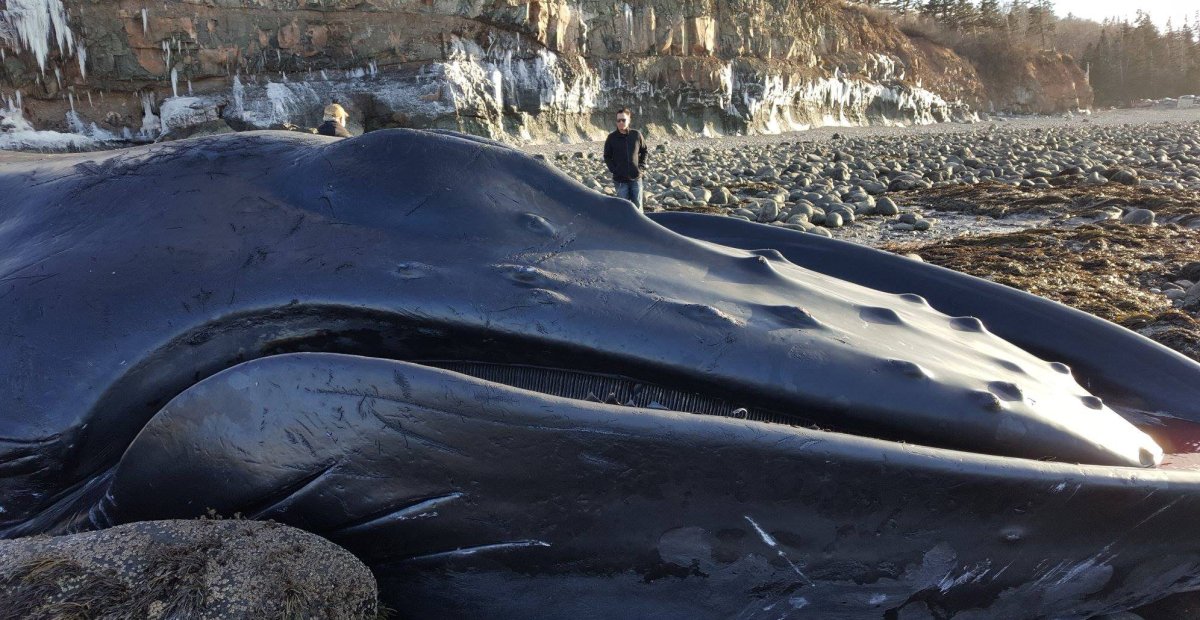A dead humpback whale has washed up on a beach in Nova Scotia’s Annapolis Valley.

The whale was first observed at a location locals refer to as Donnellan Brook on Sunday night by passersby, but the first images began circulating on social media on Monday morning.
READ MORE: 100 volunteers help guide beached whale into waters
Jenny Osburn took the photos and says that the creature is quite large.
“It was amazing as we came closer to see how big it is,” Osburn said in a Facebook message on Monday.
“We reported it this morning and are hoping to learn more about what caused this to happen.”
The Marine Animal Response Society, a charitable organization based in the Maritimes, says that they’ve been in contact with the Department of Fisheries and Oceans (DFO) to coordinate a response to the beached whale.
The organization has told Global News that they will likely be at Donnellan Brook on Tuesday.

Get daily National news
WATCH: Other whale species suffering losses in North Atlantic

DFO says that they are also aware of the situation.
“Conservation and Protection officers will be on site to take measurements and photos which will be provided to the Marine Animal Response Society. We will be determining if a necropsy is required once we have more details,” wrote Debbie Buott-Matheson, a spokesperson for the department, in a statement.
According to the fisheries department, humpback whales can grow to between 13 and 14 metres long and weigh between 34,000 and 45,000 kilograms.
The species is classified as a special concern by the DFO but the species’ population has “dramatically increased” from its time as a target for whaling vessels in the 20th century.









Comments